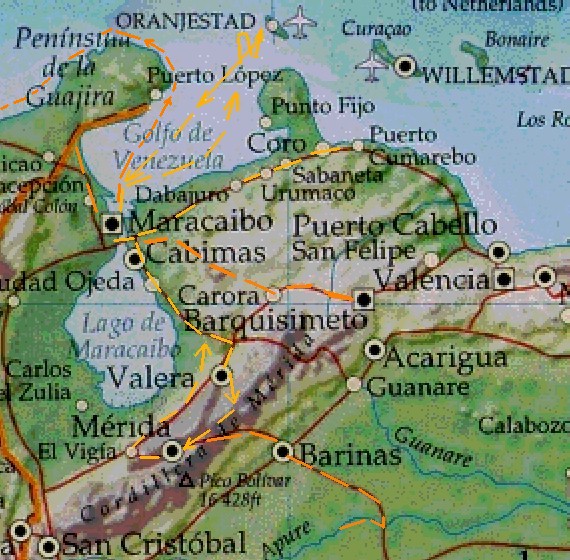

July 2002 - June 2004 -- Maracaibo
April 2003, December 2003 -- Merida
December 2003 -- Los Llanos
Home Page
Places Index
Time Index
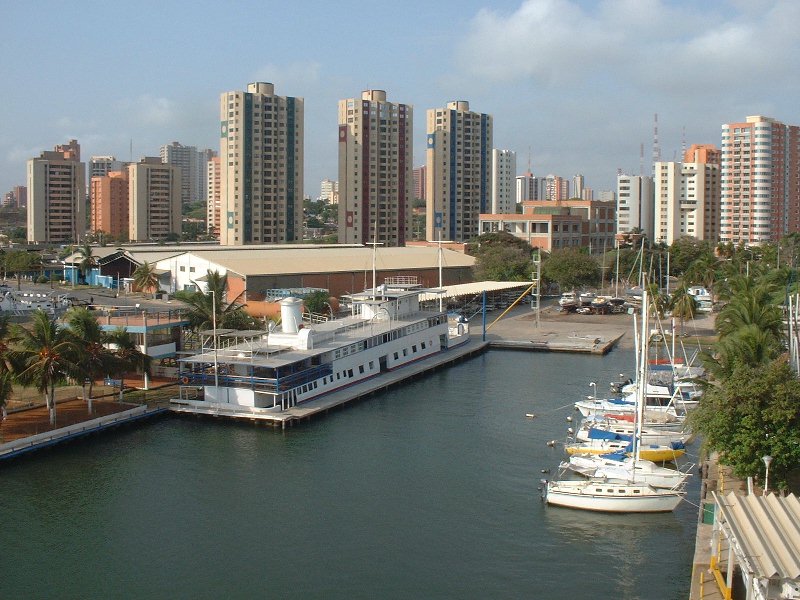
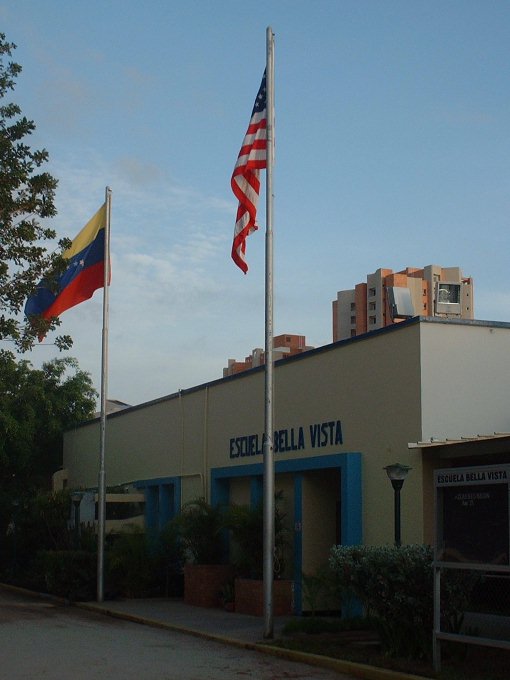
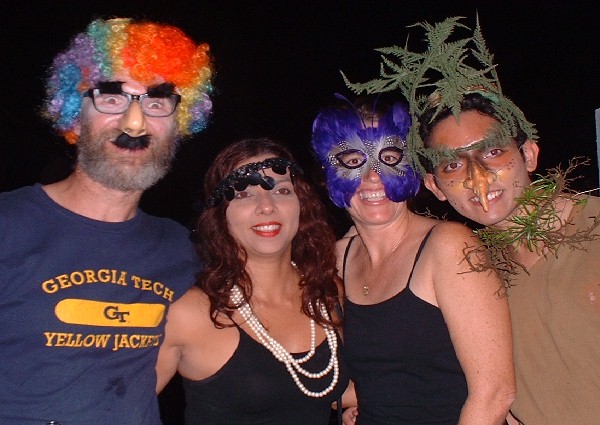
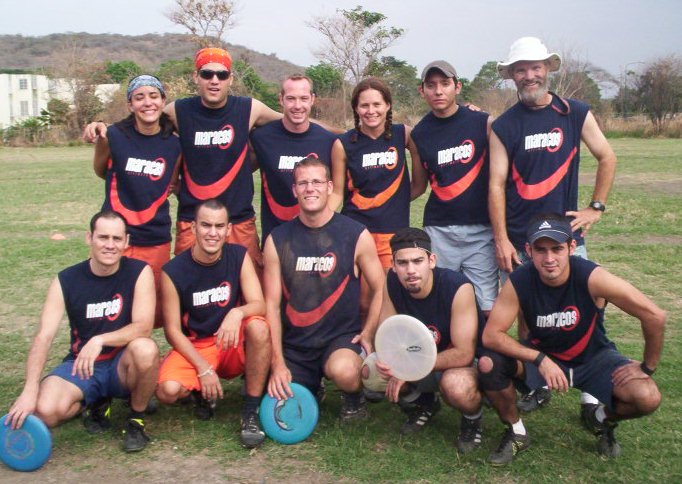
We arrived in Maracaibo in July 2002 and stayed until June 2004. During this time we kept the boat at the Los Andes Yacht Club except for one two-week period in the summer of 2003 when we visted Aruba. The yacht club basin was only deep enough for us to enter and leave on high tides, and there was no protected water in the immediate vicinity of the club to await a tide change. Fortunately, the yacht club's small basis was well protected and the boat was safe there. For us, it was the best place in town - the club faced the lake and usually had a nice breeze. The people in the club were all friendly, and the concessioner made good food and drinks at low prices. We were somewhat celebrities when we arrived - no other foreign sailor had arrived in Maracaibo for at least several years, and as far as we know, none arrived during our time there.
Clearly, this situation does not lead to a great deal of sailboat storytelling. However, we did make some enjoyable travels from our base in Maracaibo and some of these travels are very briefly summarized below and in our pages for Peru and Ecuador.
What was Maracaibo like? Well, first of all, nobody obeyed traffic laws – instead of stopping at intersections, most drivers honked a half a block before the intersection to announce their intention to shoot through. It made little difference if there was a traffic light or a stop sign. It was considered reasonable to park anywhere for a short time – even in the middle of an intersection if a street vendor had to be haggled with for a good price on a bag of avocadoes. This approach to moving about also extended to waiting at a counter. It was not done. If there was room at the bakery counter to wedge in, a Maracucho would generally wedge in and attempt to communicate their order to the harried baker. It did not matter if there were ten other people there already trying to give orders. If there was a line at a cash register in a store and someone left a foot of space before the next person in line, a Maracucho would step into that space and congratulate themselves for spotting a “shorter line”.
There was considerable political tension with a controversial liberal leader trying to reverse the course of decades of perhaps unenlightened leadership - Chavez alienated many sectors and apparently led the country on a ruinous course; but there were many poor people in Venezuela who demanded a better future than seemed to be in store otherwise. Associated with the political turmoil, there was considerable threat of crime on the streets from petty theft to kidnapping.
We lived within two blocks of our work at Escuela Bella Vista. The school rented apartments in the surrounding high rise buildings and furnished them. They were equipped with 25 year old washing machines and air conditioners that required frequent repair, but the school steadfastly made the repairs rather than buy new. Except for these items, the apartments were nice by local standards. We rode bicycles or walked to the yacht club, to the grocery and to school. For longer trips, we could get a taxi cheap or hitch a ride with other teachers at school or other friends in town.
Although there were some American fast food places nearby, like McDonalds and Wendy's, we had never cared for these in America and surely avoided them in Maracaibo - more so since they were among the most expensive. It was relatively rare to find a restaurant meal for more than 12,000 bolivars (Bs) or about US$4.00 - and the local beer, Polar, was commonly available in 255 mL bottles for 600Bs, or about US$0.20.
This brings us to our main impressions of Maracaibo: parties and frisbee. Perhaps because we were hanging around younger people in Maracaibo - the teenage students at school and the teachers who were generally in their 20s or 30s - but we found Maracaibo to be a social place. We began by joining friends at Sarita's for beer after school on Fridays followed by dinner on the street at Franco's Mini Lunch, soon we added the occasional Saturday night parties at various apartments around the area, and started playing Ultimate Frisbee twice a week. In the last few months, Lisa took Yoga classes. We also spent lots of weekends at the yacht club. It was a good time.
Our work in Maracaibo was an eye-opening experience. Not having kids, we never paid much attention to the education system after leaving it. We read the news and knew that there has been a general sense of malaise in education over the past couple of decades. Having been in the system - though we only saw one school that may be out of the normal run of schools - gave us some clues about how modern education of kids is screwed up. See our Education page if you are interested in our warped perspective.
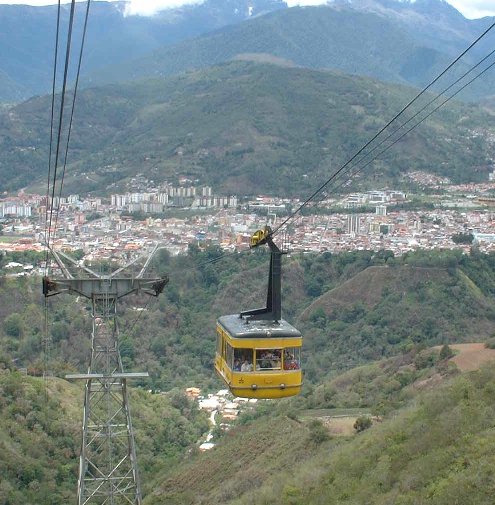

We rode up to the third station and rode horses over a high mountain pass with a light snow, to the town of Los Nevadas. This very quiet and remote village is accessible by jeep as well, and some recommend riding a jeep to Los Nevadas and riding the horses one way up to the Teleferico - an option for your consideration if you visit there. The teleferico ride costs about 20,000 Bolivars per person ($7 in early 2004, but subject to change). The last leg of the ride requires a separate ticket for a few thousand Bs more. We did not make the trip to the last stop at Pico Espejo which is opposite Pico Bolivar at 5008 meters, but we hear it is quite cloudy and cold there.
The high mountains of the Andes are home to the endangered Andean Condor. One was captive at a condor aid station north of Merida and we got a good look at him. This bird had an eleven foot wingspan and stood over four feet tall - rightfully considered the king of the mountains.
There are many restaurants, posadas (guest houses), and shops in Merida, so you can wander around for days, and there are outfitters to take you for a tour or adventure. We think the best of the tour companies is Arassari Trek, and we took a tour with their guide, Roger, at the end of 2003 - see Los Llanos below.
We stayed at a guest house in Merida called Casa Alemana during both of our trips, almost. We cannot recommend this place however. Although it had clean and comfortable rooms, the management is lacking. We had booked lodging far in advance at this posada for a busy holiday weekend, but when we arrived the manager told us another guest had decided to extend their visit for a day and therefore we had no place to stay. He did find us a room in a dumpy hotel elsewhere, and he apologized and shrugged a lot. We do not think this is considered good business anywhere. So, beware of Marc T. - his cheerful demeanor can sure fool you.
The terrain of the high mountains is called altiplana, and the main plant here is the frailejon - a fuzzy-leaf low plant with an over-all shape reminiscent of an avocado, only about the size of an ottoman. Part of the year, these plants put up a stalk of yellow flowers and the mountainsides are covered with the yellow dusting.
Down in Merida again, one can become acquainted with the national food of Venezuela, the arepa. An arepa is made by rolling up a ball of moistened corn flour and frying it into a small cake like a flattened cupcake. This almost tasteless, sometimes doughy, grease absorbing bread unit can be cut open like a biscuit and filled with any kind of food you care to name. At a good arepera, you can choose from well over 20 fillings for your arepa. There are numerous areperas in Merida - and anywhere else you might travel in Venezuela.

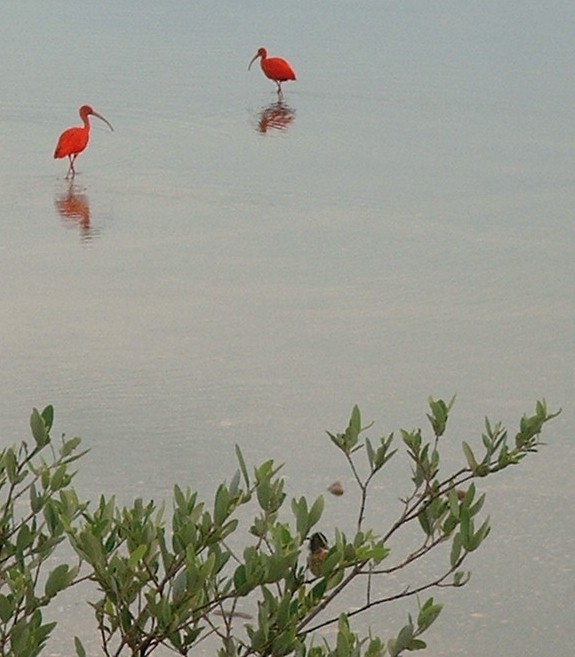
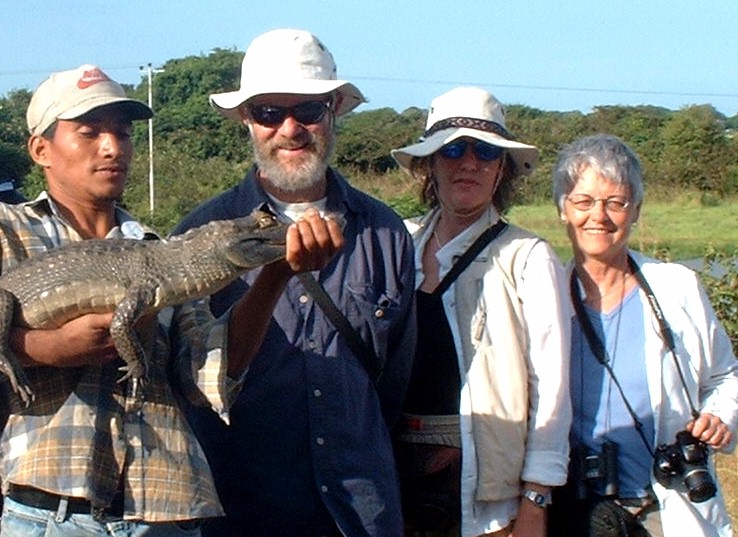
Morrocoy (near Coro) 2003 - east of the Coro peninsula. We visited Morrocoy for an adventure weekend to check out the sailboat that fellow-teachers the Barnwell family had bought and moored near this national park. Morrocoy is a string of near-shore islands between the towns of Tucacas and Chichiriviche (yes, with study you will be able to sound this out). They are fringed with coral reefs and are a popular weekend destination for Venezuelan from up to 6 hours away to the east and south and west. However, we did not find the area to be unusually scenic since we had been spoiled by the western Caribbean (see Belize, Honduras, San Andres, and Panama) - except for the scarlet ibis which were not uncommon in the shallow lagoons.
Los Llanos (a vast area SE of Barinas) 2003 - We visited Los Llanos with our friend Katie in the last week of 2003. This vast area in south central Venezuela is a grassland that is seasonally flooded by the rivers leaving the eastern flank of the Andes and the highlands to the south. The area we visited on our guided trip with Arassari Trek of Merida, was a section of the Rio Apure, and the most dangerous part of the trip was the crossing of the Rio Apure bridge to get to the boat launch area. We had to cross the bridge twice past yellow painted tires marking holes in the steel grating where a car can no longer pass (and might even fall through!). We called it the "bridge of death".
The tour featured a night in the Arassari Trek bunkhouse in a small fishing village on the south river bank the first night. We took a sunset boat ride to see the many birds going to roost along the river, and the guides managed to find an iguana and a boa constrictor trying to get some sleep in the trees next to the river after dark. Back in the village, we slept in hammocks with mosquito nets in a large screened common room - very pleasant except for the snoring Belgian that camped out in the hammock next to Cade.
The next day, after a pre-dawn ride to some scenic river crossings where the guides knew we could spot interesting wildlife (such as the small caiman featured in the accompanying photo), we rode a way up river into the countryside - exploring the river. We spent the night with a farm family in the countryside near the river. They fixed a nice dinner and put us up in their palm roof, open sided shelter, again in hammocks with mosquito netting. We returned to the fishing village the next day after stopping to catch some piranas and a 10 foot anaconda, and rode the van back through the town of Barinas to a lodge that Arassari Trek has on a nearby whitewater river in the foot of the Andes. We spent the evening there, and some of the adventurous travelers rode innertubes down the river the next morning before we all rode the van back to Merida.